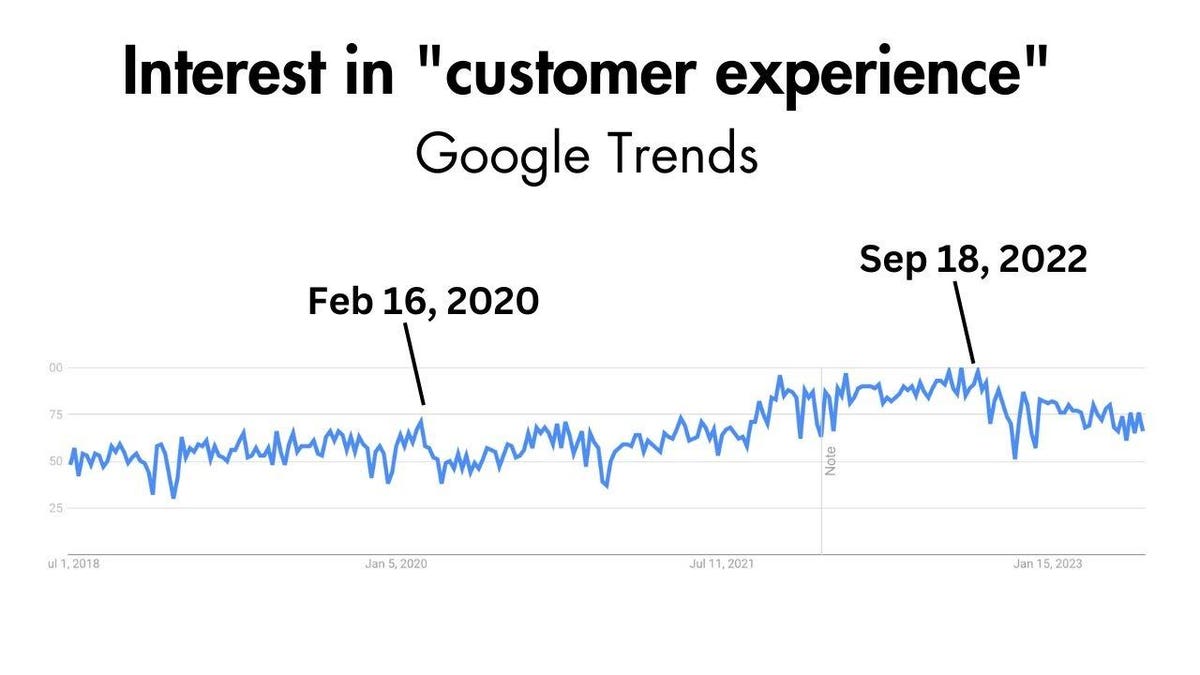It’s popular for companies to declare they are customer-centric, focused on customer experience, obsessed with the customer, and so on. But, there’s a major disconnect between executive pronouncements and customer perceptions.
A pre-pandemic study by Capgemini found that while three-quarters (75%) of organizations believe themselves to be customer-centric, only 30% of consumers agree.
The pandemic upended customer experience by forcing companies into new ways to interact with and serve their customers. Digital transformation became essential to survive, and slow-moving projects kicked into high gear. One would expect that the net result would be significantly better customer experience once business has returned to normal.
In fact, two data points suggest that things may be getting worse, not better.
Customer Perceptions Signal Trouble
A June, 2023 study from Customer Contact Week Digital showed that 57% of customers surveyed thought that customer service had gotten worse in the last year, with a quarter of all respondents saying it had become much worse. A mere 4% thought customer service was much better.
At at time when one expects companies to be consolidating the gains made during the pandemic and fine-tuning their operations, the majority of this group of customers is saying the opposite – things are worse or much worse.
To be fair, this was a small study – a mere 517 U.S. respondents were surveyed. And, the answers reflect their perceptions and beliefs, not actual customer service performance data.
Perceptions Trump Reality
When it comes to customer experience, customer perceptions are the most important factor. A company can’t improve its processes to deliver better, faster service than its competitors and declare victory. The bar for excellent customer experience is always moving. If a customer thinks your support process is high effort, then it is high effort. Companies like Amazon, Zoom, and Uber are showing customers what a seamless experience looks like – if yours doesn’t match up, you have a problem.
Are Companies Changing Priorities?
Once again, there may be a disconnect between what companies say and what they actually spend money on. “We put the customer at the center of everything!” sounds great, but do functions like finance and IT behave in a manner consistent with that declaration?
A disturbing indicator I found was that, according to Google Trends, interest in customer experience is declining.
In the years leading up to the pandemic, searches for “customer experience” were trending upwards, peaking in mid-February of 2020. Then, as the reality of Covid set in, interest dropped briefly. It then began trending up again at an even steeper slope – good news for customers.
Inexplicably, in September of 2022 interest began to wane. The most recent data is more than 25% below the 2022 peaks. (Note: the odd double dips that repeat annually are the U.S. holidays of Thanksgiving and Christmas.)
Web searches are hardly a reliable indicator of corporate priorities, but a consistent decline over many months may indicate changing emphasis and fewer new customer experience initiatives.
It’s Not Too Late to Re-Focus on the Customer
General trends and broad surveys tell us nothing about individual companies. Perhaps continuous improvement in customer experience is still your firm’s top priority. But if top management has moved on to new, shiny things you’ve got a problem. If you aren’t improving your experience, you are falling behind.
AI to the rescue?
Artificial intelligence will power the next big leap in customer service. I’m not talking about annoying chatbots that never understand what you are asking and never have the answer you are looking for.
The next generation of chatbots will know everything in your knowledgebase and will have been trained on as many past chats, calls and emails as you have recorded. The will know more than most human reps, they will be patient, and they will be scalable to meet varied customer demand.
Companies that get AI support right will be the new customer service leaders.
Read the full article here




